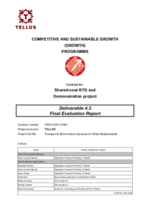
Berlin (Germany)
The German capital, Berlin, situated in the centre of the European Union, is an important node in the Trans-European Network. Berlin has a population of some 3.4 million inhabitants and covers an area of almost 900 km².
The city comprises a large number of urban districts and boroughs that are very diverse in character. It has excellent infrastructure (road, rail and inland waterways) for both passenger and urban freight transport.
The public transport system serves around 4.4 million inhabitants of Berlin and the surrounding region. The majority of the inner-city public transport system is operated by Berliner Verkehrsbetriebe (BVG), supplemented by 15 urban railway lines and many commuter lines connecting the city of Berlin with the neighbouring region.
Due to its excellent public transport network, Berlin has the lowest car density in Germany, with fewer than 350 cars per 1,000 inhabitants. However, there are considerable transport-induced problems (including emissions of particular matter and NO2, as well as noise) that create pressure for action.




















